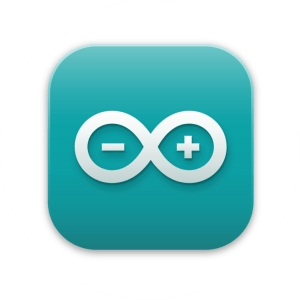
-
Arduino IDE – Detailed Explanation
The Arduino Integrated Development Environment (IDE) is an open-source software used for writing, compiling, and uploading code to Arduino microcontroller boards. It supports C and C++ programming languages and is widely used for embedded systems, robotics, IoT, and automation projects.
1- On which platform are the tools used?
The Arduino IDE is available on multiple platforms:
- Desktop versions:
- Windows (Windows 7 and later)
- MacOS (Mac OS X 10.10 and later)
- Linux (64-bit & ARM versions)
- Web-based version:
- Arduino Web Editor (works on Chrome, Firefox, and Edge)
- Mobile version:
- Arduino IDE for Android (via Google Play Store)
2- What hardware requirements are needed?
Minimum system requirements:
🔹 For Windows:
- Windows 7 or later
- CPU: Intel/AMD 1GHz or faster
- RAM: 2GB or more
- Storage: 200MB minimum
- USB port: For connecting Arduino boards
🔹 For macOS:
- macOS 10.10 or later
- CPU: Intel-based Mac
- RAM: 2GB minimum
- Storage: 200MB
🔹 For Linux:
- 64-bit Linux distributions
- CPU: 1GHz+
- RAM: 2GB minimum
🔹 For Web-based Arduino IDE:
- Stable Internet connection
- Chromium-based browser (Chrome, Edge)
🔹 For Mobile Arduino IDE:
- Android 5.0 or later
- Bluetooth or USB OTG support
3- Installation and membership stages
Installation Process:
- Desktop Version
- Download Arduino IDE from the official website: https://www.arduino.cc/en/software
- Install the software by following on-screen instructions.
- Connect the Arduino board via USB.
- Select the correct board and port from the “Tools” menu.
- Install necessary drivers (Windows might require CH340 or FTDI drivers for some boards).
- Start coding and upload your program!
- Web-based Arduino IDE
- Create an account on Arduino Cloud: https://create.arduino.cc/
- Install Arduino Create Agent (a small plugin for connecting the board).
- Start coding from the browser.
- Mobile Version
- Install Arduino IDE for Android from Google Play Store.
- Connect Arduino via USB OTG or Bluetooth.
- Write, compile, and upload code directly from your phone.
Membership Stages
- No membership is required for offline use.
- For the web-based IDE, a free account is needed.
- Paid plans available for cloud-based IoT applications.
4- What can it be used for?
Arduino IDE is used for programming microcontrollers in various applications, such as:
🔹 Robotics & Automation:
- Building autonomous robots.
- Creating home automation systems (e.g., smart lighting, door locks).
🔹 IoT (Internet of Things):
- Connecting sensors to the internet for remote monitoring.
- Building weather stations.
🔹 Embedded Systems & Electronics:
- Controlling motors, LEDs, sensors, and displays.
- Developing industrial automation systems.
🔹 Education & Learning:
- Teaching coding, electronics, and engineering.
- STEM projects in schools and universities.
5- What is its prominent feature compared to other tools?
✅ Unique Features of Arduino IDE
🔹 Cross-Platform – Runs on Windows, macOS, Linux, and Web.
🔹 Supports Multiple Boards – Works with Arduino UNO, Mega, ESP8266, ESP32, STM32, and more.
🔹 Open-Source & Free – Fully open-source with an active community.
🔹 Extensive Libraries – Thousands of pre-built libraries for sensors, displays, and motors.
🔹 Beginner-Friendly – Simple interface with drag-and-drop code support (via plugins).
🔹 Cloud Integration – Syncs with Arduino IoT Cloud for remote projects.Compared to other microcontroller programming tools like MicroPython or Raspberry Pi IDE, Arduino IDE is simpler, more widely used, and has better community support.
6- Sample application made with pictures
Example Project: LED Blinking with Arduino
Step 1: Connect an LED to Arduino
Step 2: Write Code in Arduino IDE
void setup() {
pinMode(13, OUTPUT); // Set pin 13 as an output
}
void loop() {
digitalWrite(13, HIGH); // Turn LED on
delay(1000); // Wait 1 second
digitalWrite(13, LOW); // Turn LED off
delay(1000); // Wait 1 second
}
Step 3: Upload the Code
Click the Upload button in the Arduino IDE, and the LED starts blinking!
📌 More examples: Arduino Project Hub7- Which courses can it be used in and is compatible with?
Compatible Courses:
- Electronics Engineering – Microcontroller programming.
- Computer Science – C/C++ programming for hardware.
- Mechanical Engineering – Automation systems.
- Robotics – Embedded robotics programming.
- IoT & Smart Systems – Connecting sensors & devices to the Internet.
- STEM Education – Hands-on coding and hardware projects.
8- Is it free?
✅ Yes, Arduino IDE is 100% free and open-source.
🔹 Desktop Arduino IDE – Free for all users.
🔹 Web-based IDE – Free with optional paid cloud storage & IoT features.
🔹 Arduino Cloud Subscription (optional) – Paid plans for IoT device management.9- Links related to Arduino IDE
🔗 Official Website: https://www.arduino.cc/
🔗 Download Arduino IDE: https://www.arduino.cc/en/software
🔗 Web-based IDE: https://create.arduino.cc/
🔗 Arduino Forum: https://forum.arduino.cc/
🔗 GitHub Repository: https://github.com/arduino/Arduino
🔗 Arduino Project Hub: https://create.arduino.cc/projecthub🔹 Conclusion
Arduino IDE is a powerful yet beginner-friendly programming environment for microcontrollers. Whether for robotics, IoT, or STEM education, it provides an easy-to-use platform with extensive libraries, community support, and cross-platform compatibility. 🎯
- Desktop versions: